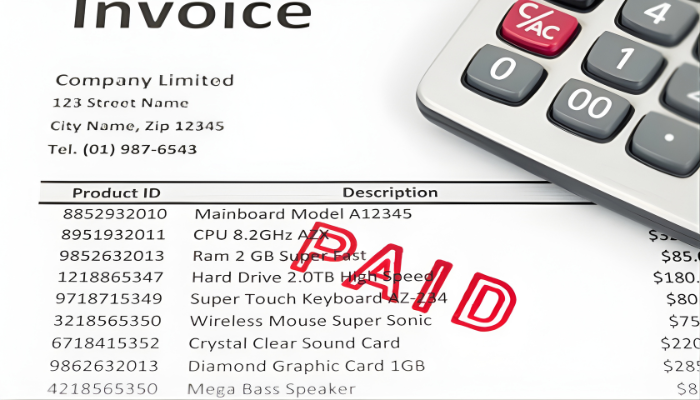
Have you been considering using your assets to secure funding for your business? You’re not alone. As traditional lending standards remain tight, more small business owners are turning to asset-based loans as a flexible, accessible way to maintain cash flow and fuel growth.
The asset-based lending (ABL) market is seeing a major resurgence, and for good reason. According to recent industry research, the market grew from $785.6 billion in 2024 to a projected $896.12 billion in 2025, with a compound annual growth rate (CAGR) of 14.1%. What’s driving this momentum? It’s a mix of economic uncertainty, tighter bank lending standards, and the rising demand for flexible, non-traditional financing options.
As traditional lenders pull back from capital-intensive loans, businesses are increasingly looking to ABL as a strategic way to unlock the value of their assets and improve liquidity without giving up equity or waiting months for a loan decision. For small and mid-sized businesses in particular, asset-based lending is no longer a last resort, it’s a competitive advantage.
But while this type of financing can offer real advantages, it’s important to go in with a clear understanding of how it works and what to watch out for. Choosing the wrong structure or partner could put your business assets (and long-term plans) at unnecessary risk.
To help you make informed decisions, we’ve compiled key insights and best practices for using your business assets as collateral, including what lenders typically look for, which assets are most commonly used, and how to weigh the risks and rewards.

1. Start by Understanding What Your Assets Are Really Worth
If you're thinking about using business assets as collateral, don’t just guess what they’re worth; get clear, documented numbers. Whether it's equipment, real estate, inventory, or receivables, having a solid grasp of your assets' current market value gives you more confidence and negotiating power.
Here’s why that matters: lenders will perform their own valuation, and it may be on the conservative side. Their goal is to reduce risk, which can mean assigning a lower value to your assets than what they might sell for in real-world conditions.
To level the playing field, consider bringing in a third-party appraiser or assembling recent sales data and depreciation records. This isn’t about inflating numbers, it’s about ensuring the value on paper reflects the real, practical value your assets bring to your business.
The more prepared you are, the more likely you are to walk away with terms that work in your favor and without surprises down the road.

2. Weigh the Risks and Rewards Before You Sign
Asset-based lending can be a powerful way to boost your business, especially when traditional financing isn’t within reach. It can help you unlock capital tied up in equipment, receivables, or inventory and turn it into immediate cash flow.
One of the biggest upsides? You may not need perfect credit to qualify. Since lenders focus more on the value and stability of the asset than on your personal or business credit score, this route can work well for entrepreneurs still rebuilding credit or just starting out.
That said, it’s not without its risks. If the asset you’re leveraging is something your business depends on, like your delivery fleet or critical machinery, you’ll need to think through the impact if payments become a challenge. In a worst-case scenario, defaulting could mean losing access to something vital for day-to-day operations.
A good rule of thumb? Choose an asset that has strong value, but wouldn’t bring your business to a halt if things went sideways. And always, always read the fine print so you know exactly what happens if payment terms aren’t met.

3. Not All Assets Are Treated Equally—Check What Qualifies
Before you assume your asset is ready to back a loan, take a moment to confirm: Will the lender accept it?
Lenders don’t all play by the same rules when it comes to collateral. Some may readily accept accounts receivable or inventory, while others might prefer equipment or real estate. It’s not just about the asset’s value, it’s about how easily the lender can convert it if needed.
That’s why it’s smart to ask upfront which assets are eligible. It could save you time, stress, and keep you from hitting a funding roadblock late in the process.
Asset-based lending can absolutely be a lifeline for businesses looking to grow or get back on steady ground, but it’s not one-size-fits-all. Knowing which assets you can confidently leverage and having a clear plan for how you’ll repay, keeps you in control of the process and your business’s future.

4. Make Sure Your Ownership Is Clear
When offering an asset as collateral, lenders need more than just your word, they’ll want verifiable proof that you legally own it and that no one else has a claim to it. This step can feel administrative, but it’s a necessary part of protecting both your business and your borrowing potential.
Start by gathering documentation that clearly shows you own the asset. This could be a bill of sale for equipment, a title document for property or vehicles, or purchase records for inventory. If the asset has changed hands within your company or was acquired through another business arrangement, you may also need to provide a clear paper trail of ownership. For accounts receivable, make sure your invoicing and customer contracts are well-organized and clearly state payment terms.
Equally important is confirming that the asset is free from liens or encumbrances. If another lender or vendor already has a secured interest in that asset, it may not be eligible as collateral, or you’ll need to resolve those claims first. This is where reviewing Uniform Commercial Code (UCC) filings or running a lien search can help you avoid surprises.
Taking the time to organize these details in advance can accelerate the approval process and give the lender more confidence in your application. It also sends a strong signal that you’re a well-prepared borrower, which can work in your favor when negotiating terms.

5. Understand Advanced Rates and How Much You Can Borrow
One of the biggest misconceptions in asset-based lending is assuming that the value of your asset equals the amount you can borrow. In reality, lenders apply what’s known as an “advance rate”, a percentage of the asset’s value they’re willing to finance, and that number varies based on the asset type and perceived risk.
For example, accounts receivable from reliable commercial clients might have an advance rate of 80–90%, since they’re considered liquid and low-risk. On the other hand, inventory, machinery, or specialized equipment may have a much lower advance rate, sometimes as low as 30–50%, because they’re harder to sell quickly if repossessed.
Understanding how these rates work isn’t just about crunching numbers; it’s about setting realistic expectations. If your asset is worth $100,000, you might only be eligible for a loan of $60,000, depending on its category and how comfortable the lender is with the resale value.
Before starting the loan process, ask potential lenders about their typical advance rates for different asset classes. This can help you map out how much funding is actually available to you and whether it fits your business goals. It also puts you in a better position to compare lenders and find the one that sees the most value in what you bring to the table.

6. Be Prepared for Monitoring and Reporting
Getting approved for an asset-based loan isn’t the end of the process; it’s just the beginning of an ongoing relationship with your lender. To protect their investment, lenders often require periodic updates on the condition and value of the assets you’ve pledged as collateral.
This could mean submitting regular financial statements, inventory reports, or aging reports for your receivables. In some cases, especially with larger loans, lenders may also conduct on-site audits or request third-party appraisals to ensure everything aligns with your original agreement. As scrutiny increases, so do expectations: many lenders now cap advance rates at 75% on accounts receivable and 50% on inventory, reflecting heightened caution around depreciation, obsolescence, and payment reliability.
While this might sound intrusive at first, it’s a standard part of the process, and one that savvy business owners use to their advantage. Staying organized with up-to-date records not only keeps the lender confident but can also open the door to better terms, additional funding, or faster renewals down the line.
Think of it as a partnership: the more transparent and well-documented your business operations are, the more flexible and supportive your lender is likely to be. Being prepared upfront for this level of oversight can save you time, reduce stress, and help ensure continued access to working capital.

7. Assess Operational Impact
Before you commit any asset to a loan agreement, it’s crucial to take a step back and ask a fundamental question: “Can my business still operate if I lose this asset?” It’s a simple question, but one that can help you avoid costly mistakes.
Asset-based lending can unlock much-needed capital, but pledging essential equipment, vehicles, or infrastructure without a backup plan can put your entire business at risk. If an unexpected downturn affects your ability to make payments, and the lender reclaims that asset, how would your business function the next day?
Let’s say your delivery trucks keep your operation running. Or maybe a particular piece of machinery is vital for your production line. If that asset were suddenly unavailable, would you be able to meet customer demand, fulfill contracts, or maintain your revenue stream?
It’s not just about the value of the asset, it’s about its role in your daily operations. Choosing the right collateral often means finding a balance between value and operational redundancy. Ideally, you want to secure the loan with an asset that holds strong value for the lender, but won’t cripple your business if things go off track.
Taking time to assess this now can prevent tough conversations later and position you to grow with confidence.

8. Stay Informed About Market Trends
The world of asset-based lending isn’t static, it evolves alongside economic shifts, industry innovation, and borrower demand. As lenders refine their criteria and new funding models emerge, the terms, rates, and structures available to borrowers can change quickly.
One of the most notable shifts in recent years is the rise of private credit funds and non-bank financial institutions. These lenders are stepping in where traditional banks have pulled back, often offering more flexible terms and faster decision-making. For many small businesses, these alternatives provide valuable access to capital without the red tape of conventional underwriting processes.
Staying current with trends, like rising interest rates, advancements in AI-driven underwriting, or shifts in how lenders view collateral quality, helps you stay ahead of the curve. For example, changes in supply chain dynamics or tech-led financing platforms may affect how your receivables or inventory are valued.
Make it a point to check in on the market regularly. Subscribe to industry updates, talk to financial advisors, or attend webinars focused on small business finance. A bit of awareness goes a long way in keeping your financing strategies sharp and proactive, not reactive.
At the end of the day, using your business assets as collateral can be a smart, strategic move if you go in with your eyes wide open. From understanding the true value of your assets to knowing the terms, risks, and impact on your operations, every detail counts.
The most successful borrowers aren’t just prepared, they’re informed, intentional, and clear on how the financing fits their bigger picture. Whether you’re navigating growth, weathering a slow season, or building a more resilient cash flow plan, asset-based lending can be a valuable tool when paired with the right guidance and foresight.
And remember, you don’t have to do it alone. Partnering with a lender that understands your business, communicates clearly, and aligns with your goals can make all the difference.
*Updated from May 14th, 2013, to reflect the latest financing trends, economic conditions, lender expectations, and working capital strategies relevant to small and mid-sized businesses in today’s market.
















